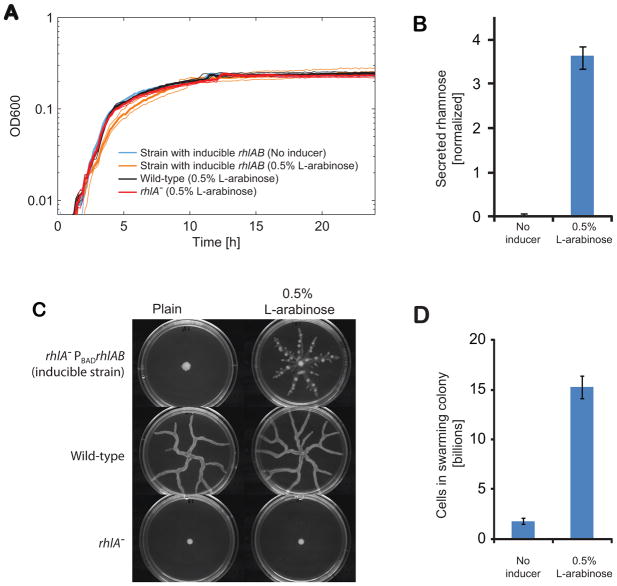Figure 7.
Unregulated biosurfactant secretion has a detectable impact to growth in liquid culture but still provides a benefit in swarming assays. (A) The addition of 0.5% L-arabinose to the inducible strain (rhlA− PBADrhlAB) results in constitutive biosurfanctant secretion. Induction affects its growth in the exponential phase in contrast to the same strain in the absence of the inducer as well as the WT and rhlA− strains in the presence of the inducer. (B) Rhamnolipids measured at 24 h of growth in liquid show that secretion by the inducible strain increases from virtually nil (without inducer) to 3.6X the wild-type secretion in medium with 0.5 % L-arabinose (values normalized by WT secretion level). (C) The inducible strain swarms in medium complemented with 0.5 % L-arabinose. The inducer does not affect the phenotypes of wild-type and rhlA−. (D) Cell counts from colonies of the inducible strain with and without the inducer show that induced swarming is very beneficial to the population.

